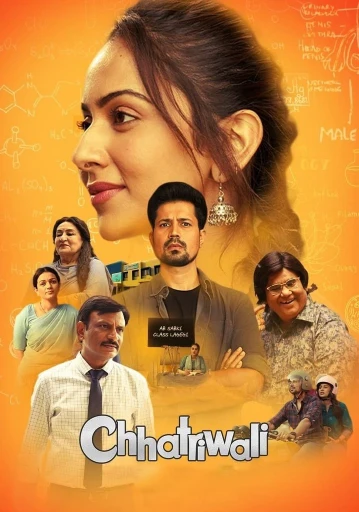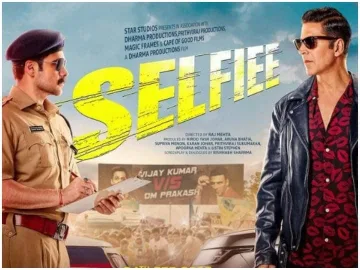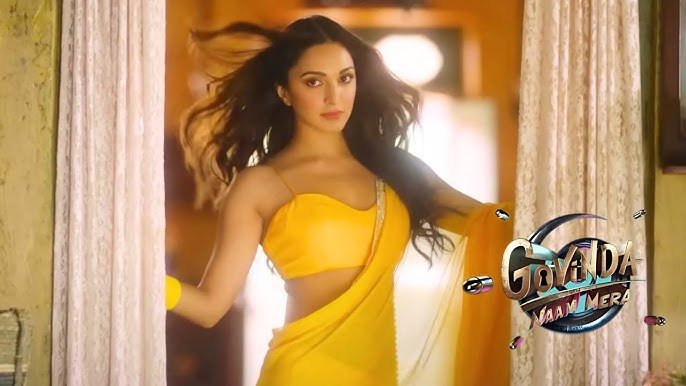Faraaz Movie Review: A Bold Retelling of Bravery and Terror 🎬
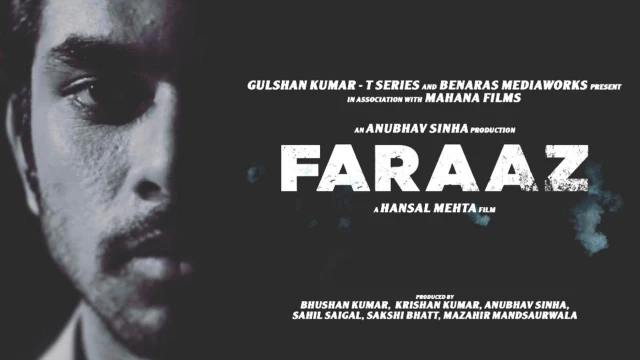
Introduction to Faraaz Movie
The film opens with an unsettling quiet that feels almost too still. Set in Bangladesh, the story unfolds slowly, filled with eerie suspense in every scene. It’s not just about a violent event; it’s a character study, a psychological thriller, and an emotional journey all in one.
By basing the film on the real-life 2016 Dhaka café attack, the creators handle a very sensitive issue. However, the approach is neither exploitative nor overly dramatic. Instead, it feels deeply personal. The opening act shows a regular day that slowly turns chaotic, reflecting the trauma experienced by many during the actual incident.
One of the most engaging aspects is how the story avoids glamorizing terror. It focuses on the human response — the moral dilemmas, fear, and courage. Even minor characters are presented with empathy, reminding viewers that these events had real victims and heroes.
For a story centered on tragedy, the emotional tone feels strangely hopeful. The focus on moral strength in the face of terror encourages deep reflection.
Real Events Behind the Faraaz Movie
The film takes direct inspiration from the July 2016 Holey Artisan Bakery attack in Dhaka. This was not just a local incident; it shocked the world. Militants took hostages in the café, leading to a long and intense standoff that ended violently.
What makes this story unique is the brave act of Faraaz Ayaaz Hossain, a young man who refused to leave his friends behind. His defiance became a symbol, illustrating what bravery looks like in the darkest moments. This film explores that sacrifice with care and depth.
The script doesn’t lean heavily on action but allows tension to build naturally. Scenes are recreated based on facts but dramatized for emotional effect. It’s a fine balance, and the movie maintains it well. Instead of feeling like a documentary, it feels like a tribute.
The creators made sure to include various perspectives — hostages, terrorists, negotiators, and bystanders. This layered approach enhances authenticity, reminding us that this tragedy affected many.
Direction and Cinematic Approach in Faraaz Movie
The director’s influence is evident in every scene. Hansal Mehta brings his signature realism to this project. Known for his work in intense dramas, his style suits this story perfectly. He avoids flashy techniques, allowing silence, shadows, and expressions to communicate powerful emotions.
The storytelling is restrained. The film does not rely on background music to manipulate feelings. Instead, the rawness of the scenes does the heavy lifting. You hear footsteps, shaky breaths, and the sound of shattered glass. It all feels disturbingly real.
The camera work plays a significant role in building tension. Close shots inside the café contrast sharply with the chaos outside. This creates a visual metaphor for being trapped — emotionally, morally, and physically.
The director also refrains from simplifying the image of the attackers. While their actions are horrifying, they are depicted as brainwashed youths rather than cartoonish villains. This humanized approach deepens the story’s impact.
Character Analysis in Faraaz Movie
Faraaz, as depicted in the film, remains calm amidst chaos. His character embodies quiet strength — someone who prioritizes loyalty and values over personal safety. This moral clarity makes him memorable.
What’s remarkable is that the film does not turn him into a superhero. He’s shown as conflicted, frightened, and uncertain — but still resolute in his choice. This authenticity enhances the character’s power. Audiences connect with him not because he’s without flaws, but because he feels real.
Other characters receive thoughtful development too. From the frightened hostages to the conflicted attackers, everyone feels like a person with a story. Even supporting roles are crafted with intention, adding to the film’s emotional depth.
Particular attention must go to the portrayal of the attackers. Their indoctrination is apparent, but the film avoids glorifying them. Instead, it uses their story to illustrate how ideology can distort morality.
Script, Dialogue & Realism in Faraaz Movie
The dialogues are crisp and rooted in everyday language. There’s no dramatic monologuing or exaggerated tension. Most lines are brief, tense, and full of subtext — just what a real-life hostage situation might feel like.
Silences matter as much as spoken words. Long pauses, anxious glances, and unfinished sentences fill the air with unexpressed emotion. This choice in writing adds depth to the already tense atmosphere.
The realism in conversations grounds the story. Viewers never feel like they are watching fiction. Every exchange seems like something that could have happened during the 2016 attack, making the experience more immersive.
The writers avoid sensationalism and focus on maintaining the integrity of the characters. Even the attackers have lines that convey inner conflict — a detail that reflects the complexity of indoctrination and human behavior under stress.
Performances That Elevate the Faraaz Movie
Casting is crucial in establishing the credibility of this intense drama. The actors playing both victims and attackers deliver emotionally powerful performances that linger long after the film ends. The protagonist’s portrayal is subtle yet impactful.
The actor playing Faraaz captures the quiet strength, inner fear, and strong moral compass of the real-life hero. His restraint in emotional scenes is particularly commendable, allowing viewers to connect more deeply.
Equally impressive are the performances of the antagonists. They are depicted not as mindless villains but as manipulated youths, each with their own internal struggles. This layered acting lends credibility to the story and avoids one-dimensional portrayals.
Supporting cast members — friends, staff, and hostages — provide a rich variety of reactions: panic, determination, disbelief, and despair. Each emotion is expressed with authenticity, making the café feel alive during the tragedy.
Intensity & Emotional Impact of Faraaz Movie
The film avoids exaggerated violence or explosive action. Instead, it thrives on psychological tension and moral conflict. Viewers are drawn into a slow-burn pressure cooker, where fear and helplessness escalate with each moment.
The emotional impact comes mainly from its realism. Watching the characters make impossible choices under immense pressure compels the audience to reflect deeply. It’s hard not to envision yourself in their situations — trapped, confused, and unsure who will survive.
The relationships between the hostages are vital. Amid the terror, friendships are tested, values revealed, and courage summoned. These human elements increase the experience’s emotional weight, making each scene more impactful.
By the time the final act unfolds, holding back tears becomes challenging. There’s mourning for lives lost, but also a unique admiration for those who chose principle over survival. This balance of tragedy and honor leaves a lasting impact.
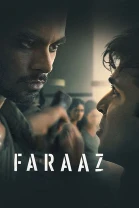
Realism vs. Creative Liberty in Faraaz Movie
As with many adaptations of true stories, the film carefully navigates the line between fact and fiction. While the main events and key characters are based on reality, artistic liberties were taken to streamline the narrative and heighten emotional drama.
Some scenes are dramatized to increase suspense. This includes timing, character interactions, and pacing. However, these adjustments never feel forced. The director ensures that the core of the story — the moral courage of one boy — remains genuine and intact.
The attackers are not simplified into clichés. Their motivations are hinted at, but are never romanticized. This choice to humanize them adds complexity, encouraging viewers to think about the dangers of radicalization, especially among young people.
Realism is also present in set design and cinematography. The cramped café, the ambient sounds, and the raw visuals contribute to a documentary-like feel. At no point does it come across as a polished studio product — and that adds to its strength.
Social & Political Context Behind Faraaz Movie
This film goes beyond just depicting a tragic event. It serves as a social commentary on the rise of extremism and how societies often fail their youth. The story asks what drives young individuals to embrace violence, especially in a world filled with conflicting ideologies.
It also highlights the quiet bravery of everyday people. Faraaz didn’t carry weapons or deliver speeches. His resistance was subtle, firm, and deeply symbolic. This form of non-violent heroism is rarely portrayed with such strength in modern cinema.
Political undertones are also woven in thoughtfully. The hesitance of international agencies, the delayed responses, and the helplessness of local law enforcement raise tough questions about governance and readiness during crises.
Rather than preaching, the film allows the context to communicate its message. It encourages viewers to face uncomfortable truths — not just about terrorism, but about humanity’s tendency to look away until it’s too late.
Cinematography, Sound & Visual Impact
The film’s visual style is minimalistic yet impactful. The camera rarely moves unless necessary, highlighting the confined nature of the hostage situation. Close-up shots amplify the fear and intensity visible on the characters’ faces.
Color grading also tells a story. Warm tones illuminate flashbacks and friendly moments, while café scenes appear muted and almost colorless. This contrast reflects the emotional shift between safety and terror.
Sound design deserves notable mention. Instead of background music, we hear breathing, shaky voices, distant gunshots, and silence. This immersive soundscape places viewers right in the midst of the situation, without distraction.
Lighting is expertly executed — flickering bulbs, blocked exits, and shadows create a prison-like feel in each frame. The absence of artificial glamour allows the horror to settle in naturally, keeping viewers tense from start to finish.
Public Reception & Critical Reviews of Faraaz Movie
Reactions to the film have mixed acclaim and contemplation. Critics have praised its thoughtful approach to a complex subject. Many described it as haunting, emotionally powerful, and a bold piece of cinema.
Audiences have connected deeply with the central theme — moral courage in the face of cruelty. While not everyone was familiar with the Dhaka attack, the narrative resonated on a human level, making it universally compelling.
Some critics mentioned the risk of addressing a real tragedy too soon. However, most agreed that the respectful storytelling, nuanced characters, and avoidance of sensationalism helped the film sidestep exploitation. It honors the events rather than taking advantage.
Social media chatter included hashtags celebrating the real Faraaz. Viewers from around the globe appreciated the subtlety, performances, and real-world relevance, calling it one of the most significant films in recent times.
Final Verdict on the Faraaz Movie
This film isn’t for casual viewing. It’s intense, emotional, and sometimes incredibly uncomfortable. But that discomfort is necessary. It pushes us to confront questions about bravery, choice, and the human spirit under hardship.
What stands out is the focus on humanity. It avoids idolizing individuals, instead honoring the courage of someone who stayed behind when he could have escaped. This act of loyalty becomes the film’s moral core.
On a technical level, the film excels. Strong direction, unforgettable performances, immersive sound design, and tight editing create an experience that sticks with you. It is a rare example of how art can serve both memory and meaning.
The film leaves viewers with more questions than answers — and that’s exactly its intent. In a world quick to judge, divide, and forget, Faraaz’s story reminds us that some choices, even in silence, resonate forever.
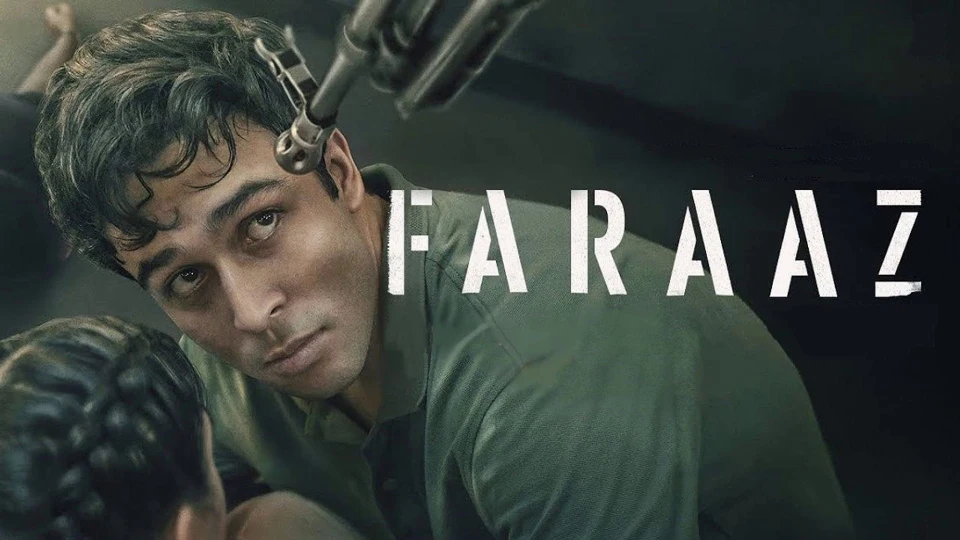
Frequently Asked Questions About Faraaz Movie
What is the Faraaz movie based on?
The film is based on the real-life 2016 terrorist attack at the Holey Artisan Bakery in Dhaka, Bangladesh. It tells the story of Faraaz Ayaaz Hossain, who chose to stay with his friends during the attack instead of leaving them behind.
Who was Faraaz Ayaaz Hossain?
Faraaz was a 20-year-old student from Bangladesh who was taken hostage during the attack. He was given the chance to leave but decided not to abandon his friends. His choice cost him his life but made him a symbol of loyalty and moral courage.
Who directed the Faraaz movie?
The film was directed by Hansal Mehta, known for realistic and impactful films like Shahid, Aligarh, and Scam 1992. His grounded storytelling brings depth to this emotional and political narrative.
How accurate is the film to real events?
The film draws inspiration from real events but uses fictional storytelling to improve emotional impact. Key facts remain the same, especially Faraaz’s heroic choice, but some scenes are dramatized for better flow.
Where did the real attack take place?
The attack happened at the Holey Artisan Bakery in Dhaka’s diplomatic zone on July 1, 2016. Armed militants stormed the café, taking hostages and resulting in the deaths of over 20 people, many of whom were foreigners.
Who plays the role of Faraaz in the movie?
Zahan Kapoor, the grandson of veteran actor Shashi Kapoor, plays Faraaz. His performance has been praised for capturing the quiet dignity and strength of the real-life character without exaggeration.
Is the Faraaz movie available on streaming platforms?
As of now, the movie may be available on some OTT platforms depending on your region. Viewers should check platforms like Netflix, Zee5, or Amazon Prime Video for availability.
Does the movie glorify violence?
No. The film does not glorify violence. It focuses on the human cost of extremism, the emotional trauma of the hostages, and the inner conflict of those involved. It respects the tragedy without being exploitative.
What language is the Faraaz movie in?
The film is mainly in Hindi, with some dialogues in Bengali and English, reflecting the multicultural setting of the real incident.
Is the movie suitable for all audiences?
The film has intense themes like terrorism, violence, and death, so it may not be suitable for younger viewers. Parental discretion is advised due to its emotional and psychological intensity.
Why is Faraaz’s story important today?
His story reminds us of moral integrity during crisis times. In a world divided by fear and ideology, Faraaz’s choice to stand by his friends, even at the cost of his life, serves as a powerful example of humanity and courage.
What makes this movie different from other terrorism-related films?
Unlike many films that focus on the attackers or political actions, this one centers on the emotional journeys of the victims and survivors. It highlights personal choices, internal struggles, and the quiet strength that defines true heroism.
visit now our other review ⚠️🚨⚠️ Chhatariwali Movie :Review A Bold Social Drama Breaking Taboos



